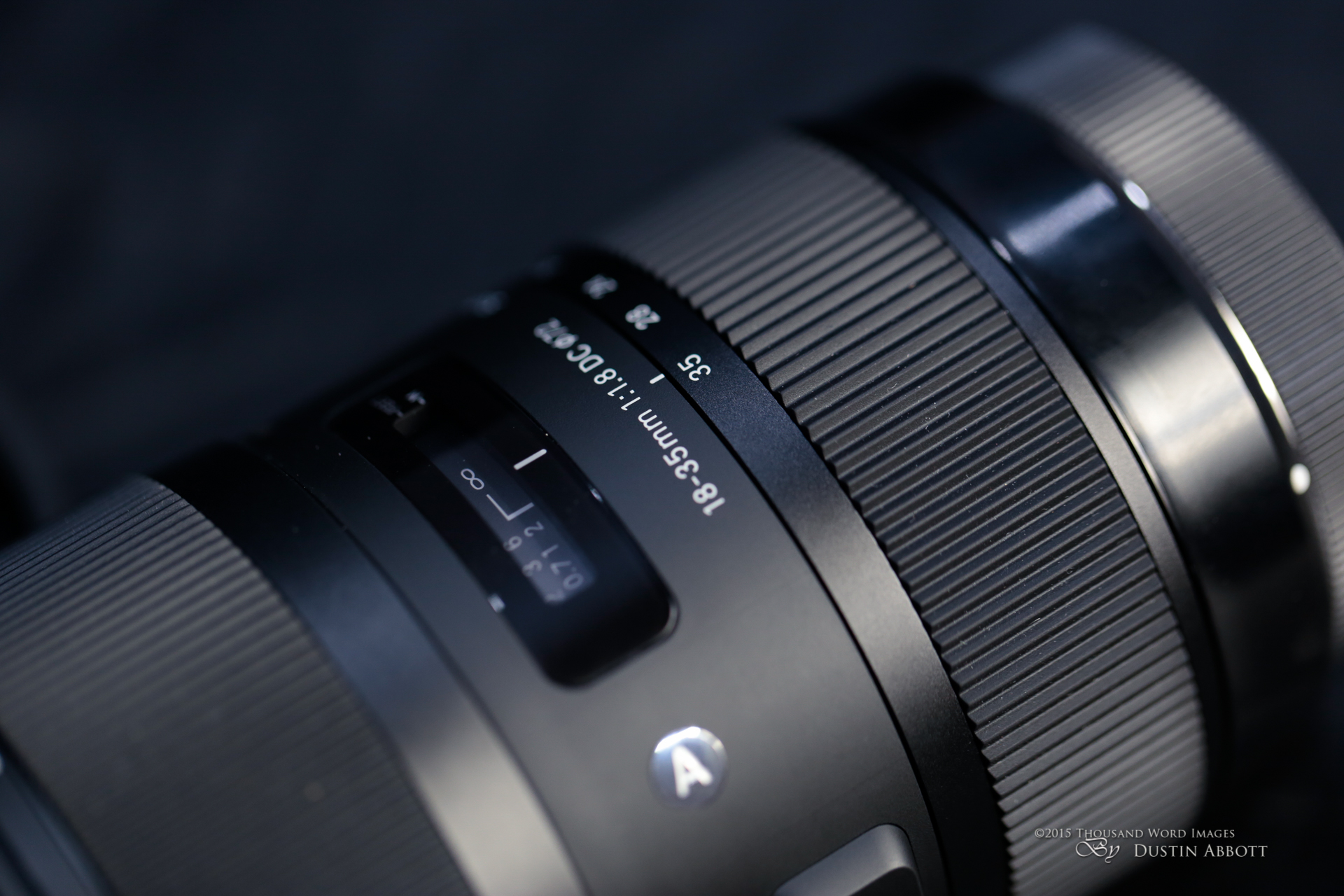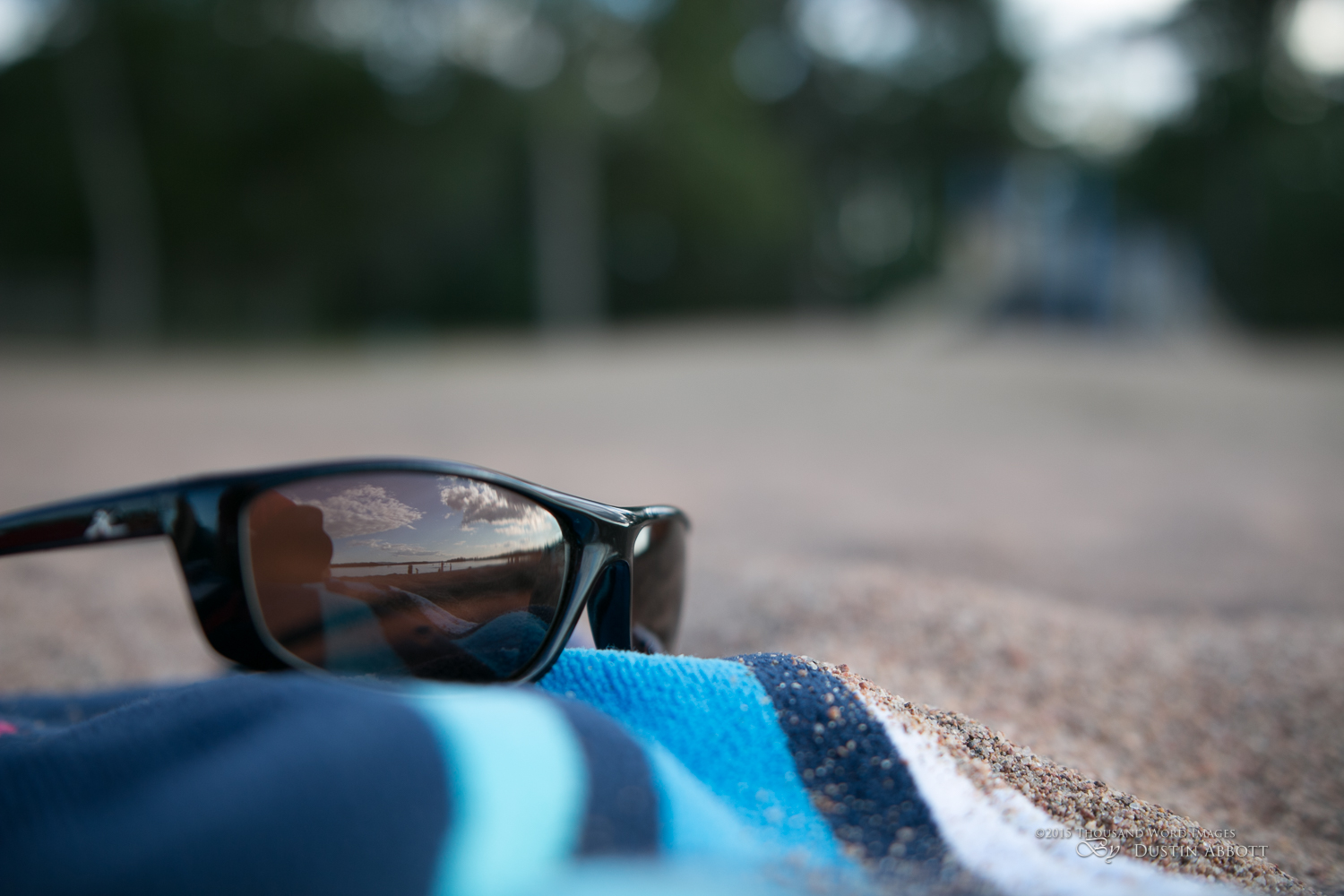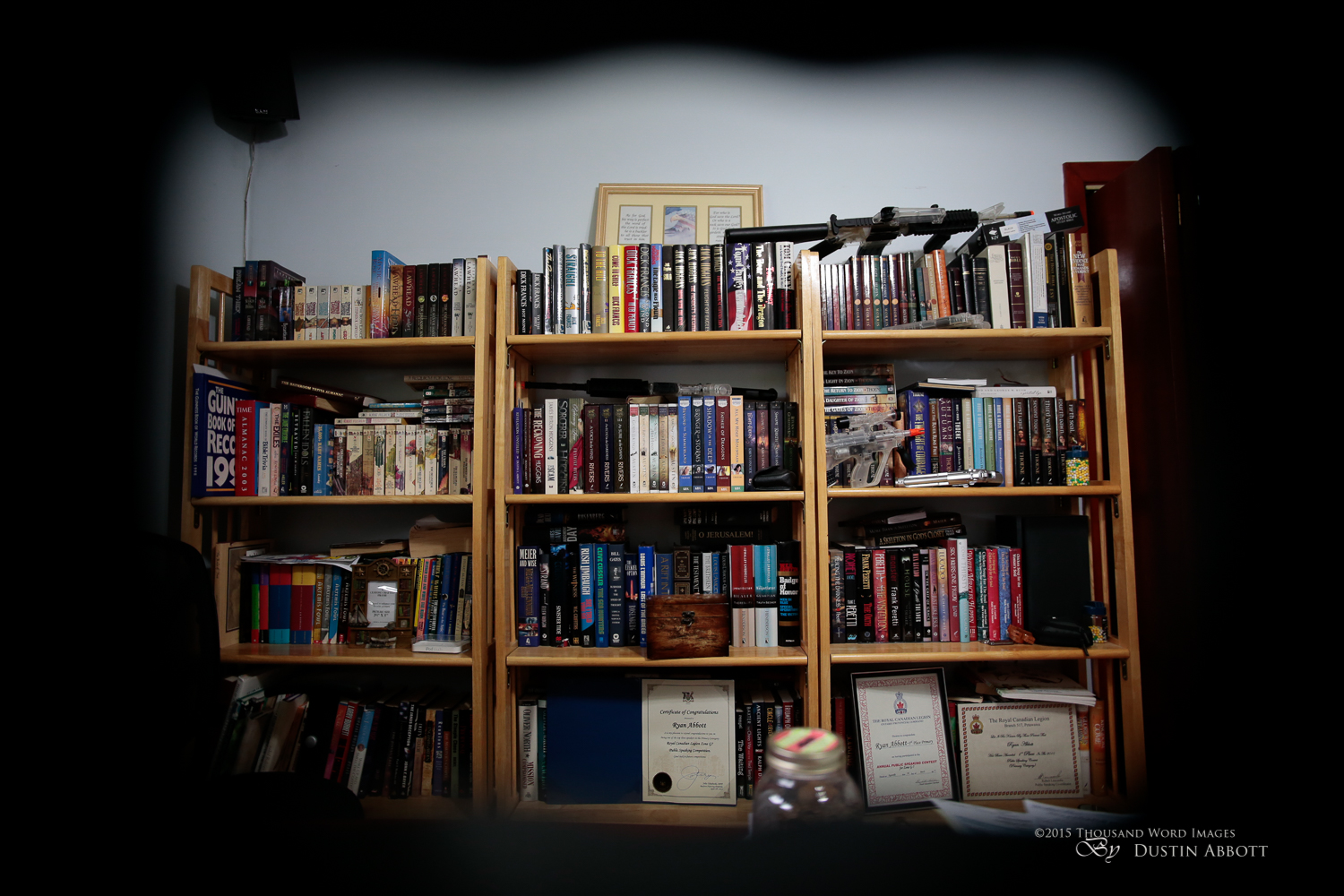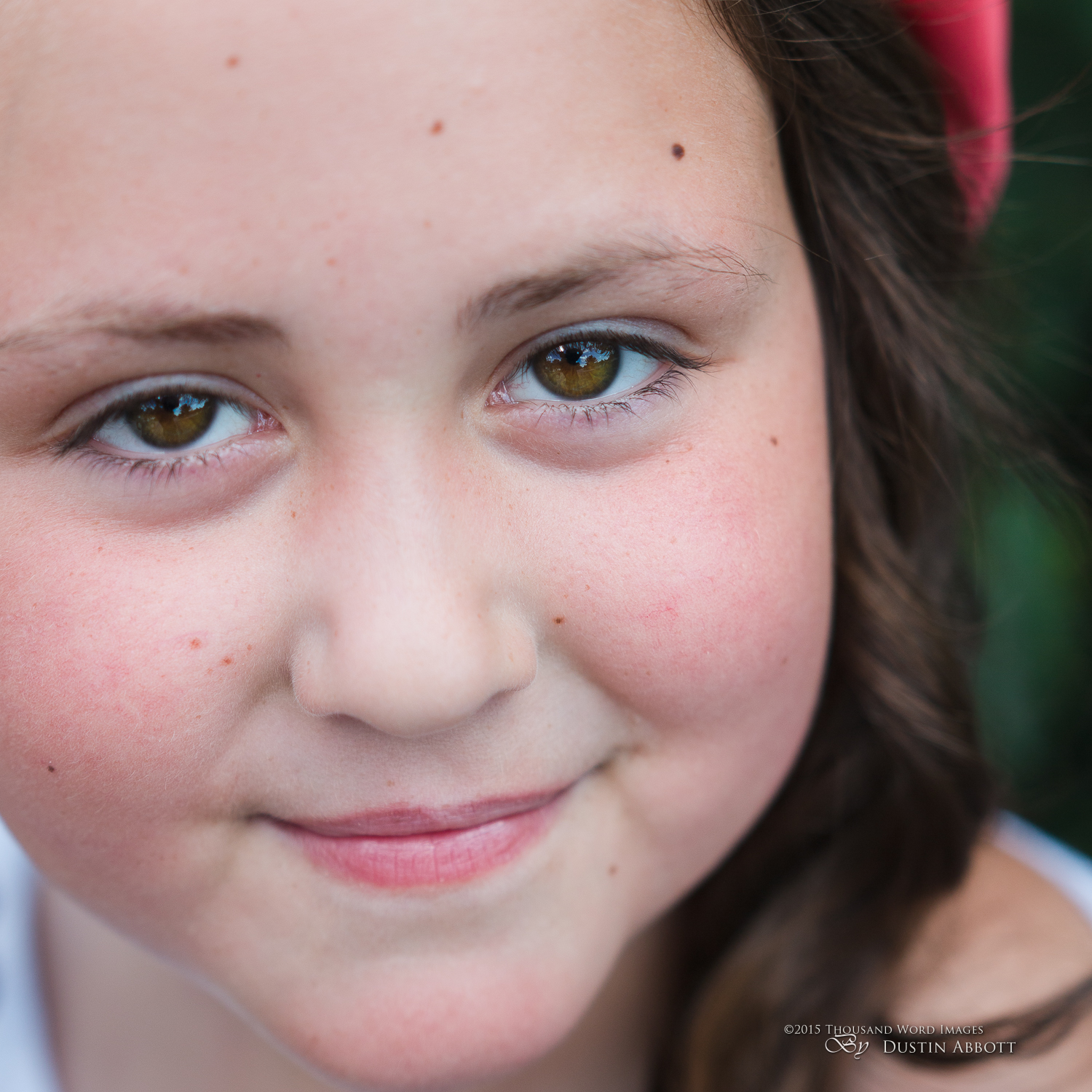Sigma 1835mm F18 Dc Hsm a Art Autofocus Lens for Nikon

Sigma has definitely been on a roll. A few years ago they awoke from their 3rd party slumber and realized that they were capable of making better products than what they were currently building. Clearly a decision was fabricated to target a more premium identify in the marketplace, and and then they scrapped their existing pattern philosophy entirely along with their marketing strategy. Whoever came up with their new "Global Vision" marketing strategy deserves a raise, and the team that came up with their new blueprint ethos deserves an fifty-fifty bigger one. Sigma lenses still have their quirks (more on that in a moment), but they are building the handsomest lenses on the market. I take now reviewed lenses from all three categories of Sigma'due south Global Strategy (Art, Sport, and Contemporary), and despite still not having a inkling what "Contemporary" is supposed to mean in this context, I tin adjure that the corrective blueprint and general construction of all of these lenses is excellent. But Sigma has too demonstrated the ability to recall exterior of the box and take a few chances. That is definitely true of the lens beingness reviewed here, the Sigma xviii-35mm f/1.viii DC HSM ART lens.

Yep, that isn't a typo! This is a zoom lens with a constant maximum aperture of f/1.eight, making it a completely unique lens in the current market. It has been an unspoken rule of sorts that zoom lenses generally have a maximum aperture of f/ii.8 (I currently own three that follow this "rule"), and the understanding was that the physics of building a zoom lens with a larger aperture than f/two.8 would produce a lens larger, heavier, and more than expensive than photographers would be willing to behave. The xviii-35ART isn't small-scale or lite, simply neither is information technology exceptionally large or unwieldy. It is slightly longer than Sigma's own 24-70mm f/2.8 (4.76" vs. 3.7") and marginally heavier (811g vs. 790g). Its specs are well-nigh identical to those of Canon 24-70mm f/2.8L II (the Sigma is 8mm longer and 5 grams heavier). This lens is a flake longer but narrower than most 24-70mm designs. It might feel a bit front heavy on smaller consumer DSLRs, but balanced nicely on my "prosumer" 70D. The same would be true for the more robust bodies from any of the camera systems that this lens is sold for (Catechism, Nikon, Sony, Pentax, and Sigma).
Sigma hedged its bets with this somewhat radical blueprint by using a fairly small-scale zoom range and designing a crop sensor simply (APS-C) lens. Then no, this lens doesn't actually piece of work on a full frame trunk (more than on that a little afterward). The success of this lens has allowed Sigma to greenlight a somewhat like total frame lens, although that lens (a 24-35mm f/two) has a smaller zoom range, a slightly smaller aperture, and is a bit heavier (+130g). The 18-35mm has a full frame (35mm) equivalent focal length of 28.8-56mm (on a Catechism). The focal length equivalency will depend on what system you are using and its crop gene. Catechism (reviewed here) has a 1.6x ingather factor. On a Nikon, Sony, Pentax, or Sigma trunk the crop factor is 1.5x and the lens will take an equivalent focal length of 27-52.5mm. The two shots beneath give you an idea of how that zoom range looks similar in real life:
There are 2 ways to look at these unique lenses, and how you judge them will ultimately come to down to whichever point of view you ascribe to. You can look at these zoom ranges equally being then marginal that they offering piddling reward over equivalent primes (zoom a few steps with your feet) or every bit being somewhat like getting multiple prime number lenses (because of the large discontinuity) in one. If you lot take the former view, this lens will seem large and expensive (Sigma makes a very popular 30mm f/1.4 ART prime for crop sensor bodies that is one-half the size, weight, and price). If y'all take the latter view, this lens will seem like a convenient bargain…but only if it delivers in the optical section. (A clue – it does!) This lens covers important focal lengths like 18mm (28mm FF), 24mm (right around 35mm FF), and 35mm (50mmish FF), and covers them all quite effectively.
The xviii-35 ART has Sigma's increasingly familiar (yet notwithstanding excellent) new design ethos. Information technology is black on black, only with very elegant contrasts achieved through textures and finishes. Both the focus and zoom rings are nice and wide (one advantage of the long lens barrel) and both are also beautifully damped. This is an internal focus and internal zoom design, and they typically accept the smoothest zoom activeness in my experience. This lens has a very premium feel and I have waxed eloquent in other Sigma Global Vision reviews near the look of the lenses and the quality of the construction. All I can say is, "Great task, Sigma!"
Internally the lens is 17 elements in 12 groups and has a 72mm filter thread. This filter size is shared with a number of Canon primes and is like shooting fish in a barrel to discover and reasonably inexpensive. The front element does not rotate during focus, then feel free to throw a polarizing filter on there! The lens has a eleven" (27.94cm) minimum focus altitude with a resulting maximum magnification of .23x at 35mm, which is a useful figure that compares favorably with its various competitors.
Epitome Quality

Anyone who has used one of Sigma's Fine art series lenses will non be surprised to me hear me say that the optical operation is exceptional. Sigma has found a style to consistently produce optical excellence with this series, and the 18-35mm is no exception. For Canon users the summit EF-South zoom lens has long been the 17-55mm f/2.eight. It has a robust build, constant discontinuity, and ameliorate optics than most other EF-South lenses. Compared side by side, even so, and the Sigma destroys the Canon in sharpness and dissimilarity. The Sigma is sharper at f/1.viii than the Canon is at f/two.viii across the paradigm frame, and stopping the Sigma down to equivalent apertures simply makes it more obvious. I recommend taking a wait at The Digital Picture's comparison tool here to get a better sense of just how clear the divergence is in chart testing.

Every bit many of you know, I don't exercise chart testing, but the optical excellence of this lens was articulate in field utilise. There is very little to criticize. Vignetting is quite low on the lens and compares favorably with most primes covering similar focal lengths. The lens is not particularly flare resistant, and will produce a bit of ghosting when the sun is directly placed in the frame. The resulting artifacts are adequately creative, however, and this is far from the worst offender I've seen in this regard. This video will give you lot an thought of the lens' reaction to the sun existence placed in the frame.
This was shot at f/eleven, and and so likewise gives you a await at a force for the lens – the nicely defined sunstars/sunbursts that it produces. That makes me recollect that you will probably want to take the risk and put the lord's day in the frame periodically! Chromatic aberrations are quite well controlled, and while the lens has the typical butt baloney on the wide stop of the zoom range and some pincushion on the long end, neither is farthermost enough to actually get your attention in field use. Lens sharpness is fantabulous. I've not oftentimes been blown away for the optical performance of crop sensor zooms, just this is an exception to the rule. It is very sharp even broad open up, and that sharpness extends across the vast majority of the frame. This is true throughout the focal range. Information technology is credible that Sigma stuck with the focal range they could do very well and went neither wider nor longer. The zoom range is express, yes, merely optical performance is not compromised at any point of it. Color rendition is also fantabulous. There were a number of images that simply delighted me right out of the camera.

The lens is also capable of producing squeamish bokeh. The transition from focus to defocus is nicely smooth, and the rounded aperture iris ensures that bokeh highlight circles remain round even when the lens is stopped downwardly multiple stops. Here are few unedited bokehlicious shots for you lot:
The focal length isn't especially long, so you will need to be fairly close to your bailiwick to really blow a background out, but the squeamish sharpness combined with good bokeh performance means that images volition take a reasonable 3 dimensional issue. Without getting as well technical, know that the depth of field is different betwixt a full frame and a crop sensor body. The larger the sensor the more than narrow the DOF at equivalent apertures. Put merely, f/i.8 produces a more shallow DOF on a full frame sensor than f/i.viii on a ingather sensor. The f/1.viii aperture helps here, all the same, and for a crop sensor lens this is one of the meliorate performers (in this focal range) for producing shallow DOF.
The lens also has a very useful .23x maximum magnification (nigh ane:4 life size) meaning that yous can get shut to things and produce reasonably pseudo-macro results (macroish?). This compares very favorable to a lot of 50mm lenses and their typical .15x magnification. Even meliorate is the fact that the lens continues to produce very sharp images at its minimum focus, although you probably will want to stop it downwards a fleck for maximum sharpness and appropriate depth of field to your subject (f/1.eight is very shallow at minimum focus range).
I own the newest Canon mirrorless body (the EOS M3). While it has a few clunky aspects (some of which are unique to modest mirrorless bodies and some of which are unique to CANON mirorless bodies), the sensor in information technology is pretty spectacular (the best crop sensor that I've encountered personally). I used the Canon EF to EF-M adapter to mount the 18-35 Fine art on the Thousand and give it a shot. The lens is obviously very large and heavy for such a body, so this is certainly not a lucifer made in sky. The image quality, however, was fantastic, although I institute the autofocus very leisurely (more and so than most of my other lens used through the adapter). Notwithstanding, if you ain a similar mirrorless torso/adapter and y'all have some fourth dimension on your hands, you can get some nice results similar these:
On a mirrorless torso, however, a small native prime like my EF-M 22mm f/ii STM makes a lot more sense, offering similar image quality and aperture value. Again, however, if you have a body and an adapter to go far work, it is an option.
Finally, due to the nature of the Sigma's mount, it is possible to mountain the lens on a full frame body. Only know that it is merely really useful at the 35mm stop of the focal range. 18mm looks like this mounted on my EOS 6D trunk:

Yuck!
The 35mm is far more than presentable, notwithstanding, and other than some vignetting and additional distortion, it is very usable.

I certainly wouldn't recommend buying this lens if you only take a full frame body, obviously, but if you happened to also accept a full frame body and didn't have a 35mm prime this might prove a useful bonus.
All in all this lens is at the pinnacle of the heap for optical performance in a crop sensor lens.
AF Concerns
Every time I review a Sigma lens I will be closely looking at the AF (autofocus) performance. I've rarely had a problem with HSM motors when it comes to sound or speed (they are amid the quietest focusing lenses that I've encountered and more often than not quite fast), but I have major concerns when it comes to AF accuracy and consistency. The Sigma 150-600mm Sport was the get-go Sigma lens that I walked away completely satisfied from when it came to its AF performance. I'm agape the 18-35mm ART didn't impress out of the box. My review body is a Canon EOS 70D, and trying to use my typical AFMA plan (Reikan FoCal) produced such variation that an automatic calibration simply didn't work (the program gave up). I did a semi-automated calibration using my own eyes, and discovered why. But when I thought I had a value zeroed in, the results would jump around. The focus peak looked similar a yo-yo. I've never had such a difficult time calibrating a lens before.
Afterward wrangling with it for a while, I feel similar I got the correct AFMA values. The question is whether or not those will remain the right AFMA values. My focus accurateness certainly improved with the current settings and I intend to keep a close centre on focus accuracy throughout the review.

I was not blown away with the lens in AF Servo mode either. The 70D has a relatively robust AF arrangement, just when I got my dog to charge towards me I felt my focus accurateness was about 25%. The lens seems to similar unmarried shot AF better.
I observe that portrait shooting is perhaps the virtually demanding blazon of photography I do for autofocus accuracy, and despite feeling that I take the right AFMA value for the lens I was nevertheless disappointed with my overall focus consistency. I by and large shot at f/ii for the portrait session, and when carefully examining my results I establish that nearly 60% of my shots were well focused, some other xx% were acceptably focused, but 20% were not focused well at all. When the lens was accurately focused, the results were quite nice (see the sharpness in the final crop!)
I apply a tool in Lightroom chosen "Bear witness Focus Points", and it shows in an overlay the information the camera recorded regarding autofocus at capture. Here are some samples that show the inconsistency I am speaking of. You will note that in every example the lens/camera reported authentic focus lock, but the actual focus is inconsistent.
In this case, the camera/lens shows accurate lock, and the image is accurately focused.
In this example the photographic camera/lens reports accurate lock, but the image is front end-focused past a fair margin (might exist acceptable for some).
Finally, in this example the photographic camera reports the same, but the image is terribly backfocused and is a wasted shot.
This is pretty hard to accept when I am accepted to coming dwelling house from a wedding with 700-1000 shots taken with my own kit and typically won't have to discard ane shot for missed focus. Some report that their copy of the lens consistently focuses accurately, just others report like frustrations with inconsistent focus results. Put simply, I call up there is copy variation, and the fact that I reviewed a new retail re-create some 2 years after the release appointment of the lens tells me that Sigma hasn't been able to completely nail down this issue.
The lens seemed to do best inside about 8 feet, simply in the crucial portrait window of 8-xv feet (for full torso shots) the focus accurateness dropped dramatically. This reveals 1 of the problems I (and others) have experienced with the lens. You can set an effective microadjustment value for a certain altitude, but that value may non be the right 1 for other distances.
I should add that I am a pretty accomplished portrait photographer. I've shot thousands of portraits with far more than wide discontinuity lenses (equally a reviewer) than what virtually photographers ever have opportunity to utilize. I shoot portraits with autofocus lenses, manual focus lenses, and even vintage glass. I know what I'm doing, and so I know that this isn't a thing of user mistake.

When focus is nailed, this lens is exquisitely precipitous. Live view results (specially with the DPAF on the 70D) are better (in terms of focus consistency), but I don't really use Alive View for portrait work very often and prefer non to. My feel with Sigma lenses say that some of you volition exist perfectly satisfied with your copy and information technology will give fabulous results; others volition experience inconsistent results every bit I did. My recommendation is to thoroughly test your copy and brand certain you have one that will calibrate well on your body. I retrieve the lens is worth the trouble.
The employ of Sigma's USB dock volition help somewhat, every bit it enables you to tune focus for several specific distances. In that location volition be a learning curve as you lot learn how to properly utilize the dock (an additional $60 charge), but my feeling is that it is worth the effort to get the best results from your lens. The USB dock will as well enable you to load firmware updates to your lenses (helping to forbid incompatibility issues with futurity bodies) and will besides work with most other newer lenses from Sigma. I'm a scrap of a tech guy, and so I personally think this is pretty cool. I didn't accept a Sigma dock for this review (I've reached out to Sigma to provide me i for future reviews), but I would accept been interested to run into how much of a deviation tuning the lens in this way would have made.
A final footnote is that I hear far fewer complaints coming from Nikon and Sony users than I practice from Catechism shooters. My judge is that Sigma autofocus is probably at its worst on Canon bodies. All third party manufacturers have to reverse engineer autofocus algorithms, but my experience is (at to the lowest degree for Canon) that Tamron has this better figured out than Sigma.
If you can overcome this hurdle with your copy of the lens, you are gilded. It has cute optics that are going to make you smile time after time.

Wide Open up – f/1.8
Glass Half Full/Glass Half Empty
I encourage yous to scout the video review of the lens for a more interactive look at my findings.
Every bit I said earlier, in that location are ii ways to look at this lens. Before examining those, however, permit me first say that this is undoubtedly ane of the finest crop specific lenses out there. APS-C has received relatively piffling development dollars from most manufacturers and as a result APS-C lenses tend to be budget options with variable apertures. This lens is as lovingly designed equally other Sigma Art series lenses, and thus it is the Cadillac of crop sensor zooms. I'm happy that such a lens exists. It does indeed exist…should you buy it?
1 argument is that the limited nature of the zoom range essentially makes this a very large prime lens. There are cheaper, smaller, and lighter alternatives. Then again, Sigma's own 50mm f/1.four ART is essentially the aforementioned size and weight and people Love it (focus bug aside). Nosotros live in a twenty-four hours of large primes, and the reality is that that this lens is far sharper than any crop specific prime number lens in this focal range. Sigma'due south own 30mm f/1.4 Art lens doesn't hold a candle to this lens optically (surprisingly). I retrieve the best way to rationalize this lens is to consider it more similar 3 important prime lenses in one zoom lens. It has prime quality (amend than prime?) at wide open apertures and gives yous the flexibility of changing your framing (though in a somewhat express style). It works nicely at broad apertures, of course, but so also becomes a very overnice mural/full general purpose lens stopped down a scrap.
In conclusion, this is a groundbreaking lens no matter how you await at it, and I applaud Sigma for taking a chance and thinking outside the box. I do feel that it is has paid dividends here. The image quality from the Sigma 18-35mm f/one.eight DC HSM ART lens is exceptional in every facet, and the fact that Sigma managed to become a full i 1/three stops wider than other zoom lenses while still nailing the image quality is a huge accomplishment in engineering. The adjacent review on my list is the brand new full frame 24-35mm f/2 from Sigma. Sigma's Achilles'south heel of focus accuracy persists with the eighteen-35mm, only I do think that many people will find the lens expert plenty to suffer a little tweaking to get it right on your body. Pair this lens with a good telephoto and you would have an excellent kit that would offer premium image quality on the groovy APS-C bodies available to consumers right now. Above all, though, I commend Sigma for taking some chances and swinging for the fences. I'm reminded of the quote from Norman Vincent Peale, "Reach for the moon. Even if y'all miss, you'll state among the stars."
Pros:
- Exceptional image quality wide open that extends to the edges of the frame
- Extremely depression vignetting
- 1 1/3 stops more light gathering at f/i.eight than other zooms at f/2.8
- Cute lens pattern and build.
- Internally zooming and focusing
- Polish, nicely damped focus and zoom rings
- Includes nice padded case
Cons:
- Large (essentially the size of a full frame 24-70mm f/2.8 lens)
- One of the more expensive ingather sensor lenses at $800 USD
- Can showroom inconsistent focus accuracy
- Limited zoom range
- Flare resistance isn't exceptional
Alternatives
I've mentioned both the Sigma 30mm prime ($300 cheaper and has a slightly wider aperture at f/1.4) before along with the Canon 17-55mm f/2.8 (abiding aperture [though a one 1/3 stop slower] and a larger focal range) as alternatives. A 3rd culling is the Tamron 17-50mm f/two.viii VC. It has some the aforementioned advantages of the Canon but is considerably cheaper ($150 less). They both have constructive image stabilization systems that help to brand up for the smaller maximum aperture. If accented paradigm quality is your goal, nevertheless, the Sigma xviii-35mm is past far the best of the bunch.
Gear Used:
Canon EOS 70D
Sigma xviii-35mm f/1.viii DC HSM ART Lens
Adobe Lightroom CC Software for Mac and Windows (Boxed Version)
Adobe Photoshop Creative Deject 1-Yr Subscription
Alien Peel Exposure vii (Use Code "dustinabbott" to get ten% anything and everything)
Purchasing your gear through B&H and these links helps fund this website and keeps the articles coming. Give thanks yous for your support.

Great News! I can now offer a v% discount on all purchases at Amplis Foto, Canada'southward Leading Photographic Supplier. Delight enter discount code: AMPLIS52014 in your cart. Information technology is good for everything in your cart, and is stackable with other coupons, also! Information technology will accept 5% off your entire order! Proceeds become towards keeping this site going and providing you lot with new reviews!
DISCLAIMER: This article and description contains affiliate links, which means that if you click on 1 of the product links, I'll receive a small commission. As an Amazon Acquaintance I earn from qualifying purchases.
Source: https://dustinabbott.net/2015/08/sigma-18-35mm-f1-8-dc-hsm-art-review/
0 Response to "Sigma 1835mm F18 Dc Hsm a Art Autofocus Lens for Nikon"
Post a Comment